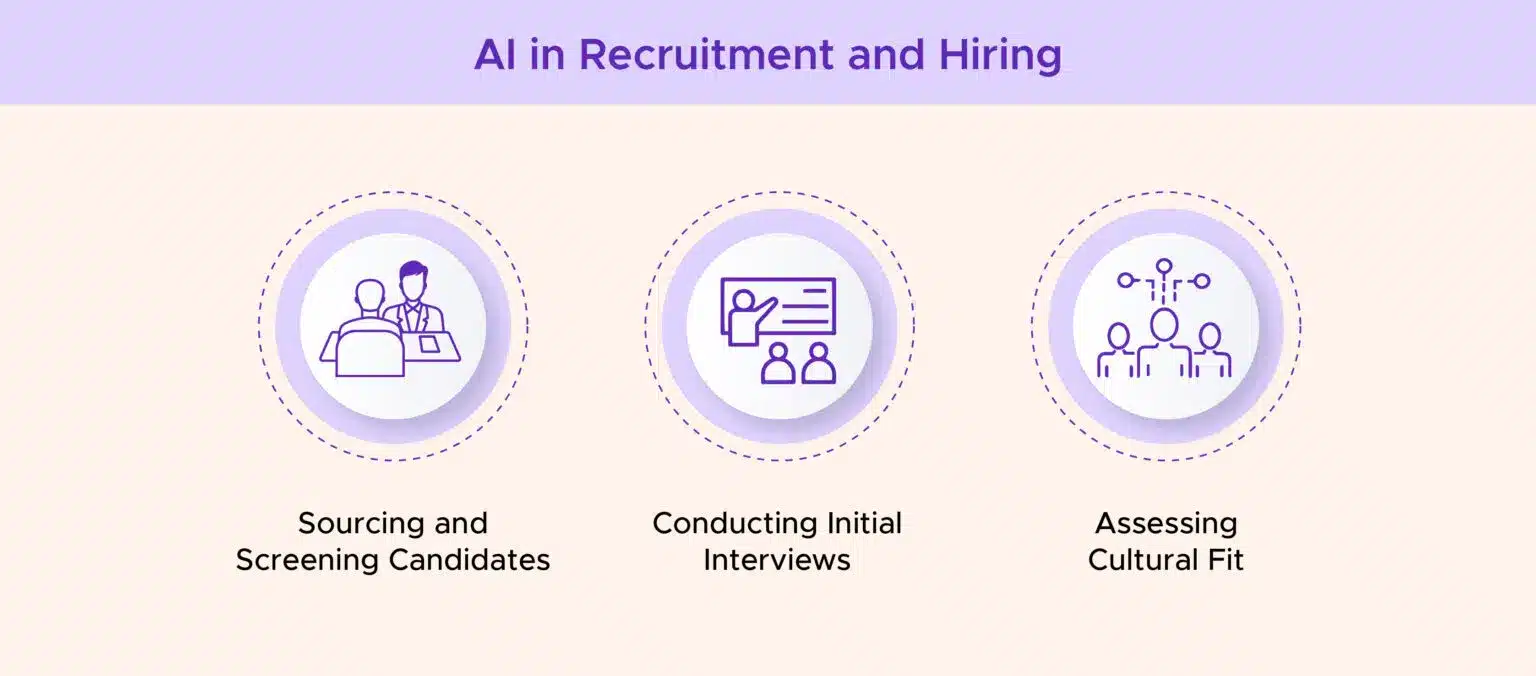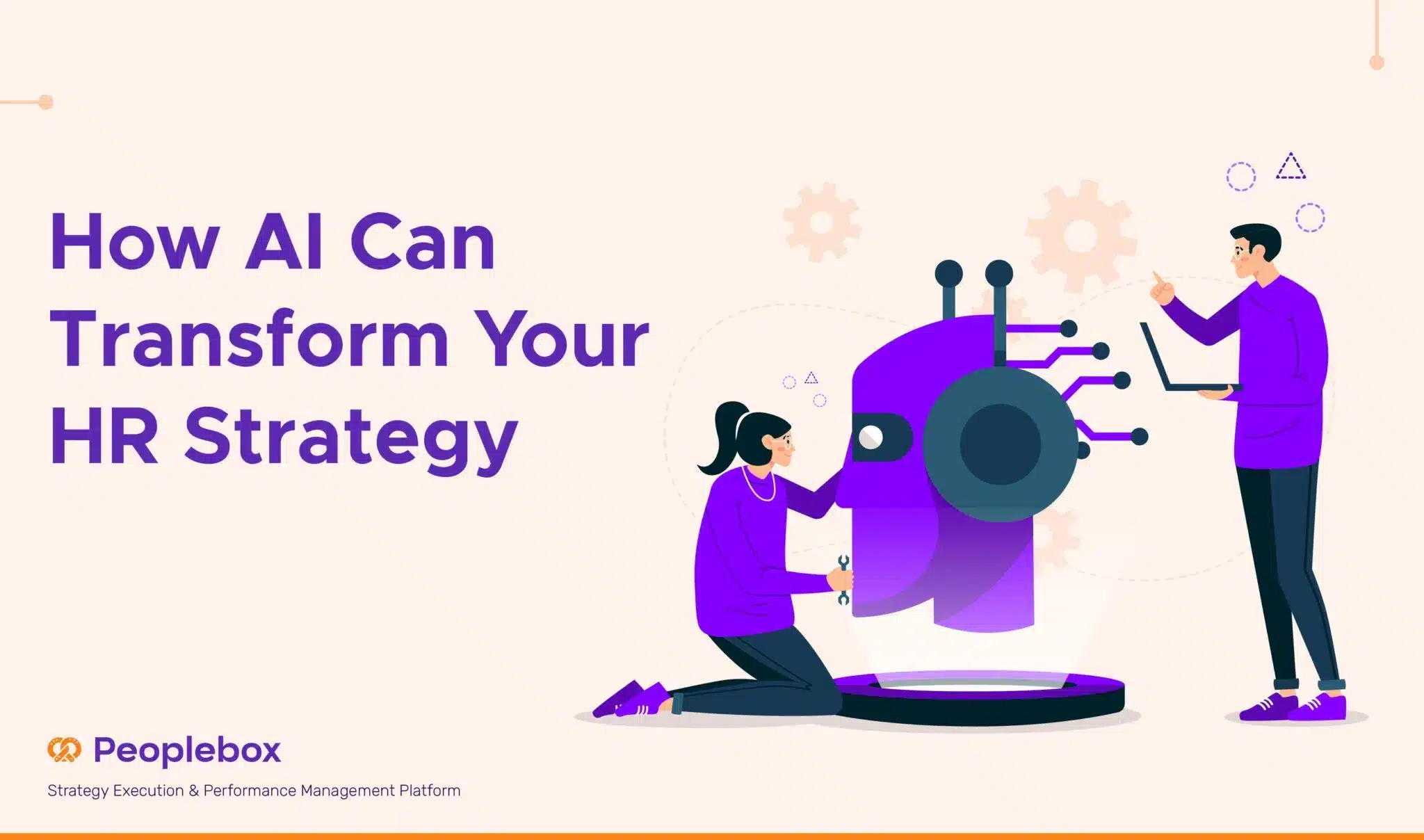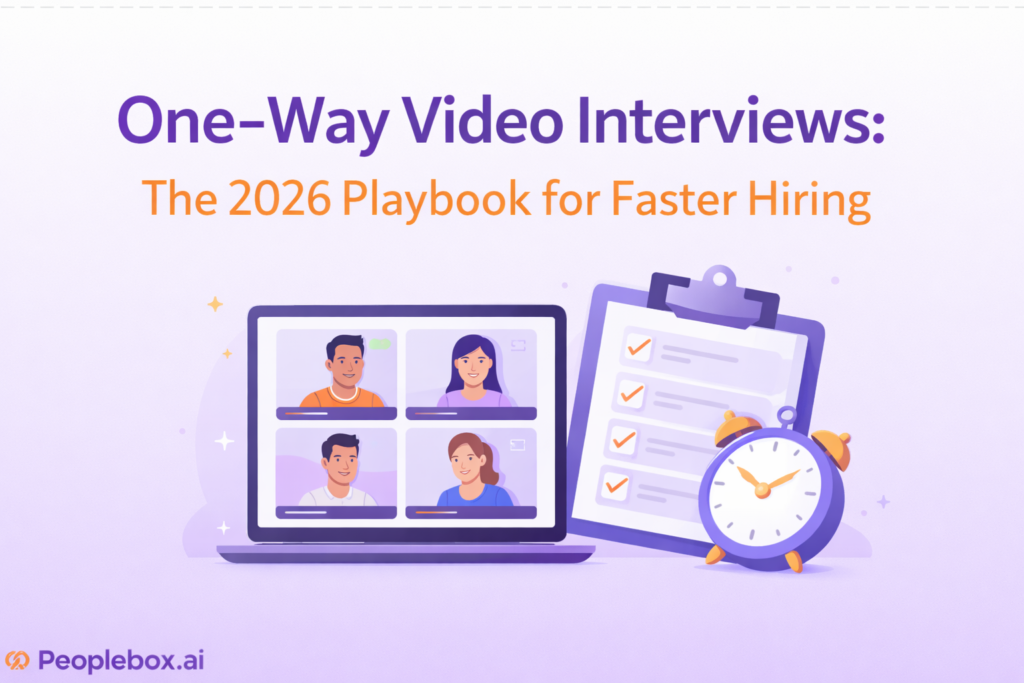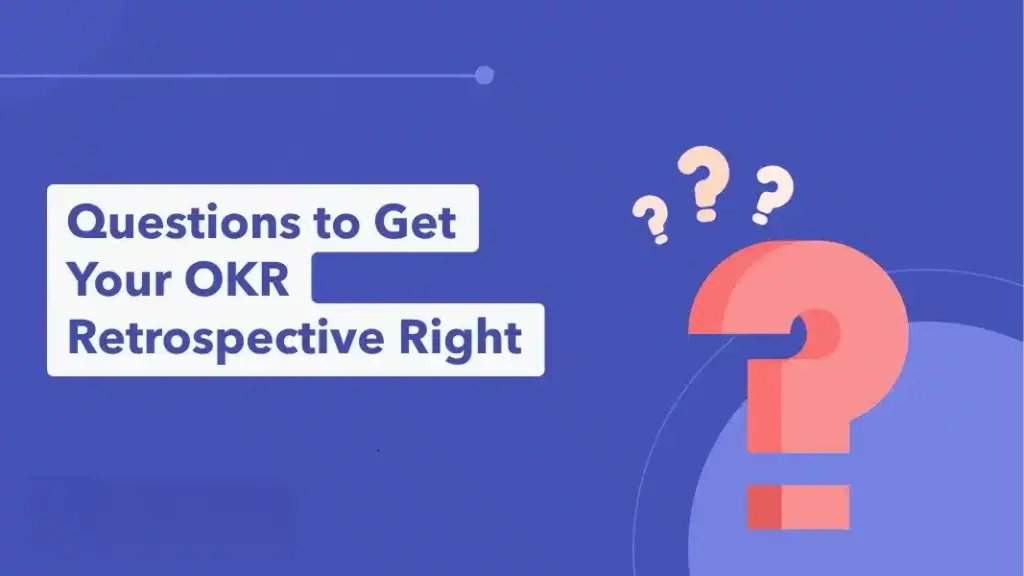As Rhea, the HR manager at a rapidly growing tech startup, sat down at her desk, she couldn’t help but feel a sense of relief. Thanks to AI-powered tools, she now had more time to focus on strategic initiatives and building meaningful relationships with her team.
Just last week, Rhea used an AI-driven recruitment platform to source and screen candidates for an open position. During the onboarding process, Rhea relied on an AI chatbot and generative ai to answer new hires’ questions about company policies and benefits. The chatbot’s conversational interface made it easy for employees to get the information they needed quickly, freeing up Rhea and her team to focus on more complex tasks.
As the company grew, Rhea used AI-powered performance management tools to track employee progress and identify areas for improvement. The platform’s machine learning algorithms analyzed data from various sources to provide Rhea with real-time insights into her team’s performance, allowing her to have more meaningful conversations and create personalized development plans.
Rhea’s story is just one example of how AI is transforming human resources. In this blog post, we’ll explore the various ways in which AI is revolutionizing HR. Let’s get started!
What is AI in Human Resource Management?
AI in HR refers to the application of artificial intelligence technologies to various HR processes and functions. These technologies leverage machine learning, natural language processing, predictive analytics, and other AI methods to enhance the efficiency, accuracy, and overall effectiveness of HR activities.
Contrary to popular belief, AI in HR is not just about automating tasks but also about providing insights and data-driven recommendations to HR professionals, enabling them to make better decisions.
What is the Impact of AI in HR in 2026?
As we move forward in 2026, we see AI continuing to transform the way HR professionals work, making them more efficient and enabling them to focus on strategic initiatives. The use of AI in HR is expected to lead to improved decision-making, reduced bias, and enhanced candidate and employee experiences.
In the future, we expect to see AI being used more extensively in predictive analytics, enabling HR professionals to anticipate future trends in HR and make proactive decisions. The use of artificial intelligence in HR will also lead to cost savings, as automation replaces manual tasks, and improved employee engagement, as personalized communication and real-time feedback become the norm.
The scalability of AI-powered HR solutions will also be a key factor in 2026, as companies of all sizes will be able to leverage AI to streamline their HR processes and improve efficiency.
What are the Benefits of AI in HR?
Incorporating AI into Human Resource processes offers numerous advantages that enhance the overall efficiency and effectiveness of HR functions. Here are some of the key benefits:

- Increased Efficiency and Time Saving
AI can automate repetitive tasks such as resume screening, scheduling interviews, and employee onboarding. This automation allows HR professionals to focus on more strategic initiatives and employee relations. For example, AI algorithms can quickly filter through thousands of resumes to identify the most suitable candidates, significantly reducing the time spent on initial screening. According to SHRM, a whopping 69% of HR professionals report faster hiring times, with 16% experiencing significantly reduced time-to-fill for open positions after using AI.
- Improved Decision-Making
AI excels at analyzing large datasets to identify patterns and trends that may not be apparent to human analysts. By leveraging data-driven insights, HR professionals can make more informed decisions in areas such as recruitment, performance management, and talent development. For instance, predictive analytics can help identify high-potential employees who are suitable for leadership roles, allowing for more effective succession planning.
- Reduced Bias
Unconscious bias in HR processes can lead to unfair hiring practices and a lack of diversity. AI can help mitigate this by evaluating candidates based on objective criteria such as skills and experience, rather than subjective factors like name, gender, or ethnicity. AI-powered resume screening tools can ensure a fairer assessment of candidates, promoting diversity and inclusion within the organization.
- Enhanced Candidate Experience
AI chatbots can interact with candidates 24/7, answering their questions and providing updates throughout the application process. This continuous engagement can create a more positive candidate experience, helping to attract top talent. Candidates appreciate timely responses and clear communication, which can enhance the company’s reputation as an employer of choice.
- Personalized Employee Development
AI can analyze employee performance data to identify individual strengths and areas for improvement. Based on this analysis, AI can recommend personalized training and development programs that align with each employee’s career goals and learning preferences. This tailored approach helps employees develop their skills more effectively and reach their full potential.
- Improved Employee Engagement
AI-powered tools can personalize communication with employees, providing real-time feedback and creating a more positive work environment. For example, AI can analyze employee feedback and sentiment from engagement surveys and internal communications, enabling HR to address concerns promptly and improve workplace culture. This personalized approach can lead to higher levels of employee engagement and retention.
- Reduced Administrative Burden
AI can automate routine administrative tasks such as payroll processing, benefits administration, and attendance tracking. This reduces the administrative burden on HR professionals, allowing them to concentrate on strategic activities that add more value to the organization. Automation also minimizes the risk of errors in these processes, ensuring greater accuracy and compliance.
- Cost Savings
By automating tasks and improving efficiency, AI can help HR departments reduce operational costs. Automation reduces the need for manual intervention in routine processes, leading to cost savings in terms of time and labor. Additionally, improved decision-making and reduced employee turnover contribute to long-term financial benefits for the organization.
- Predictive Analytics
AI can predict future trends and outcomes, such as identifying employees at risk of leaving the company. By analyzing factors like employee engagement, performance metrics, and historical data, AI can provide early warnings about potential employee turnover. HR can use this information to implement targeted retention strategies, improving employee satisfaction and reducing turnover rates.
- Scalability
AI-powered HR solutions are highly scalable, making them suitable for organizations of all sizes. As companies grow, AI systems can easily adapt to increased volumes of data and more complex HR processes without significant additional investment. This scalability ensures that HR departments can maintain efficiency and effectiveness even as the organization expands.
Now that we’ve established how AI can benefit organizations, let’s take a closer look at how AI is taking the HR function to the next level.
How to use AI in Recruitment and Hiring?

Sourcing and Screening Candidates
AI can play a crucial role in identifying and attracting the best talent for a specific role. AI-powered tools can help in sourcing candidates from various channels, such as job boards, social media, and professional networks. These tools can use natural language processing (NLP) and machine learning algorithms to analyze job descriptions and match them with candidate profiles, identifying the most relevant candidates based on their skills, experience, and qualifications.
Moreover, AI can be used to screen resumes and applications, identifying the most qualified candidates based on pre-defined criteria. AI-powered screening tools can analyze resumes for keywords, skills, and experience, and assign scores to each candidate based on their match with the job requirements. This can significantly reduce the time and effort required to review a large number of applications, allowing recruiters to focus on the most promising candidates.
Fetcher, SeekOut, and Zoho Recruit are some popular AI tools that help with sourcing.
Conducting Initial Interviews
AI can be leveraged to conduct initial interviews with candidates. Chatbots and virtual assistants can be used to conduct pre-screening interviews, asking candidates pre-determined questions and assessing their responses. These AI-powered tools can be programmed to ask a series of questions related to the candidate’s background, skills, and experience, and analyze their responses for keywords, sentiment, and tone. Some platforms even leverage generative artificial intelligence to create personalized questions.
AI can also analyze candidate responses for sentiment, tone, and language patterns to identify the most suitable candidates. By using natural language processing (NLP) and machine learning algorithms, AI can detect patterns in the candidate’s responses that may indicate their suitability for the role, such as their communication style, problem-solving approach, and ability to think critically.
Talview, Spark Hire, and Willo are some popular tools in this stage.
Assessing Cultural Fit
AI can be used to assess a candidate’s cultural fit with the organization. By analyzing a candidate’s social media profiles, online presence, and communication style, AI can determine if they align with the company’s values and culture. AI-powered tools can use sentiment analysis and natural language processing to assess the candidate’s personality traits, interests, and communication style, and compare them to the company’s culture and values.
AI can also be used to create personalized job recommendations based on a candidate’s skills, experience, and cultural preferences. By analyzing the candidate’s profile and comparing it to the company’s job openings, AI can suggest roles that are a good match for the candidate’s skills and cultural preferences. This can help to improve the candidate experience and increase the likelihood of a successful hire.
How to Use AI in Employee Management?

AI is also transforming the way organizations manage and engage their employees.
Performance Management
AI-powered performance management systems can provide real-time feedback and identify areas for improvement. AI can be used to set and track employee goals, provide personalized feedback, and identify potential flight risks. AI can also be leveraged to create personalized learning and development plans for employees.
For instance, AI can analyze employee performance data and provide real-time feedback on employees’ performance. It can also identify areas where employees may need additional support or training and provide personalized recommendations for improvement.
Performance management platforms like Peoplebox.ai help organizations manage their goals and workforce effectively. It provides a range of features for performance tracking, goal-setting, feedback, and engagement to improve employee productivity and performance. Curious to learn more? Try it yourself!
Learning and Development
AI can be used to create personalized learning and development plans for employees. By analyzing employee performance data and identifying skill gaps, AI can recommend relevant training programs and resources to help employees develop their skills. Additionally, AI can create interactive and engaging learning experiences, such as virtual reality simulations and gamified learning modules, to make training more effective and enjoyable for employees.
For example, AI can analyze employee performance data and compare their skills to the skills required for their role and the company’s future needs. Based on this analysis, AI can recommend specific training programs and resources to help employees develop their skills. AI can also create virtual reality simulations that allow employees to practice their skills in a safe and controlled environment, and gamified learning modules that provide immediate feedback, rewards, and challenges to keep employees motivated and engaged.
Employee Engagement
AI can improve employee engagement and well-being. It can create personalized employee experiences, such as tailored rewards and recognition programs, and identify potential sources of employee stress and burnout. AI can also create employee surveys and analyze feedback to identify areas for improvement.
For example, AI can be used to analyze employee data, such as performance reviews, attendance records, and communication patterns, to identify potential sources of stress and burnout. By detecting patterns that may indicate an employee is experiencing high levels of stress or burnout, AI can help managers take proactive steps to support the employee and prevent burnout.
AI can also be used to create personalized rewards and recognition programs that are tailored to each employee’s preferences and motivations. By analyzing employee data, such as their interests, hobbies, and values, AI can recommend specific rewards and recognition that are meaningful and motivating to each employee.
With Peoplebox.ai, you can easily automate timely employee pulse surveys to truly understand how your employees feel.
How to Use AI in HR Analytics?

Predicting Employee Turnover
AI can be used to predict employee turnover and identify potential flight risks. By analyzing employee data, such as performance reviews, attendance records, and job search activity, AI can identify patterns and trends that may indicate an employee’s likelihood of leaving the organization. AI can also create personalized employee retention strategies for high-potential employees.
For example, AI can analyze employee data to detect patterns such as a decline in performance, increased absenteeism, or increased job search activity, which may indicate an employee’s likelihood of leaving the organization. By identifying these patterns, AI can help managers take proactive steps to retain top talent.
Identifying High-Potential Employees
AI can be used to identify high-potential employees and create personalized development plans for them. By analyzing employee data, such as performance reviews, training records, and project contributions, AI identifies employees with the potential for growth and success. AI also creates personalized career paths and mentorship programs for high-potential employees.
For instance, AI analyzes employee data to identify patterns such as consistently high performance, a willingness to take on new challenges, and a demonstrated ability to learn and grow, which may indicate an employee’s potential for success. Based on this analysis, AI creates personalized development plans for high-potential employees, which may include additional training and career development opportunities, mentorship programs, and opportunities for stretch assignments and promotions.
By providing high-potential employees with the support and resources they need to grow and succeed, organizations can build a strong pipeline of future business leaders and ensure that they have the talent they need to achieve their strategic goals.
Optimizing Workforce Planning
AI can optimize workforce planning by ensuring an organization has the right talent to achieve its goals. By analyzing market trends, competitor data, and customer demand, AI predicts future workforce needs and creates personalized workforce plans. For instance, AI detects patterns such as shifts in customer preferences, changes in market demand, and the emergence of new technologies, indicating future talent requirements. This proactive approach helps organizations build a strong talent pipeline.
Moreover, AI analyzes employee data to identify opportunities for internal mobility and succession planning. It considers factors like employee skills, experience, and career aspirations to recommend specific workforce strategies.
What Are The Cons Of Using Artificial Intelligence In Human Resource Management?
While AI offers numerous benefits in human resource management, it is essential to acknowledge the importance of maintaining a balanced approach that combines the strengths of AI and human oversight for optimal results.
A common concern surrounding the integration of AI in human resource management is the potential replacement of human HR professionals. However, the reality is that maintaining a human element in AI-powered HR processes is essential for achieving the best outcomes. Here’s why:
Leveraging HR Expertise and Context
HR professionals possess valuable context and domain expertise that AI systems may lack. They have a deep understanding of organizational culture, industry-specific nuances, and the complexities of interpersonal dynamics within the workplace. By interpreting AI-generated data within this broader context, HR professionals can provide valuable insights and ensure that decisions align with the organization’s unique needs and values.
Enhancing Decision-Making through Collaboration
While AI can provide real-time data and insights, HR professionals play a crucial role in making more informed, nuanced, and empathetic decisions. AI can identify trends and patterns, but human judgment is essential in understanding the implications and taking appropriate actions. By combining the data-driven insights of AI with the contextual knowledge and emotional intelligence of HR professionals, organizations can make better-informed decisions that prioritize employee well-being and organizational success.
Maintaining a Personal Touch
AI can handle repetitive, data-intensive, mundane tasks, allowing HR professionals to focus on personal interactions and employee engagement. This balance ensures that the recruitment and management processes remain human-centred, fostering stronger relationships and promoting a positive work culture. HR professionals can provide the personal touch that AI cannot, such as offering emotional support, resolving conflicts, and recognizing individual achievements.
By working together, HR professionals and AI can achieve better outcomes than either could alone. This synergy leads to more efficient processes, better decision-making, and enhanced employee experiences. AI can automate tasks, analyze data, and provide insights, while HR professionals can leverage their expertise to interpret the data, make informed decisions, and maintain the human element in people management.
Common Myths about AI in HR
Now that we’ve seen how AI can help you, it’s time to debunk some myths surrounding its use.
Myth: AI algorithms are completely unbiased.
Reality: While AI can mitigate some biases, it is not entirely impartial. AI systems can inherit biases from the data they are trained on. Human oversight is crucial to ensure fairness and address any unintended biases that may arise.
Myth: Implementing AI in HR tech requires extensive technical knowledge.
Reality: Modern AI tools are designed to be user-friendly and do not necessitate extensive technical expertise. Many platforms offer intuitive interfaces and robust support to facilitate their use by HR professionals.
Myth: AI-driven recruitment leads to a loss of personal touch.
Reality: AI streamlines administrative tasks, allowing HR professionals to focus on personal interactions and relationship-building with candidates and employees. This balance ensures that the human element remains integral to the recruitment process.
Myth: AI is expensive and only works in large companies.
Reality: AI solutions are becoming more affordable and scalable, making them accessible to businesses of all sizes. Small and medium-sized enterprises can also harness the benefits of AI-powered HR tools to enhance their HR operations.
Myth: AI is the future of HR.
Reality: AI is not just the future of work or HR; it is already a significant part of the present in HR. Many organizations are actively leveraging AI to optimize their HR processes and drive improved outcomes. AI is a valuable tool that is reshaping the HR landscape and enhancing efficiency across various HR functions.
Leverage Peoplebox.ai for Effective Talent Management
Peoplebox.ai goes beyond talent management software; it’s your all-in-one platform for building a high-performing workforce.
- Align & Engage: Unify individual and company goals, fostering a culture of growth and retention for your top talent.
- Real-Time Insights: Gain continuous performance feedback with actionable data, empowered by Peoplebox.ai’s Generative AI. Get answers, charts, and insights at your fingertips so you can identify skills gaps, give ongoing coaching, and make strategic people decisions faster.
- Strategic Decision-Making: Peoplebox.ai transforms HR data into clear intelligence, allowing you to optimize your talent strategy and stay ahead of the curve.
Ready to build a thriving workforce? Get in touch with us today!






